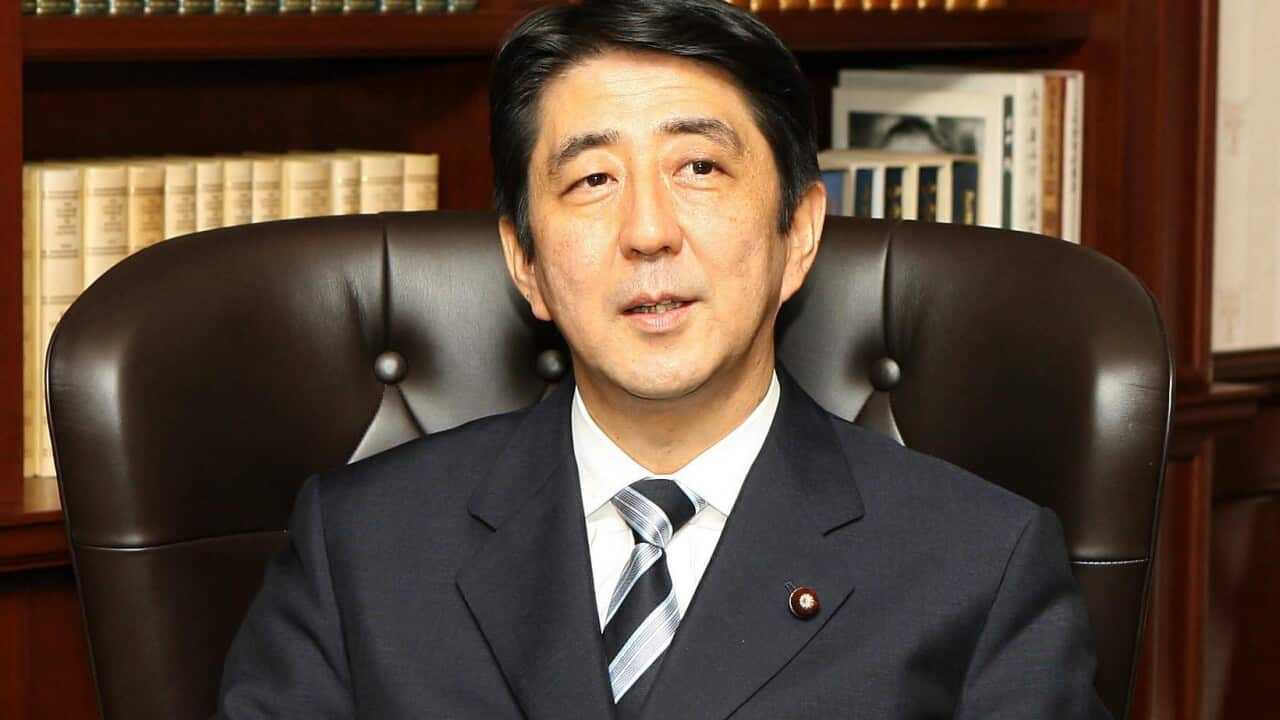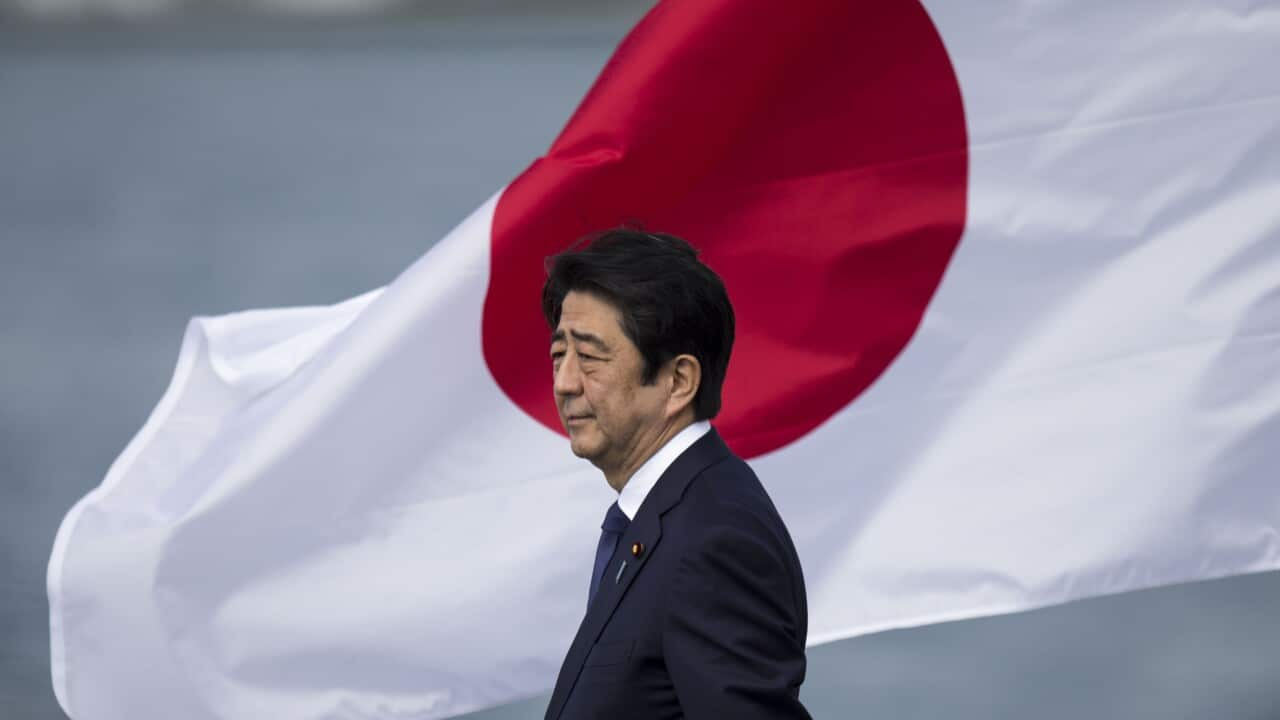

4 min read
This article is more than 2 years old
Obituary
Shinzo Abe 1954-2022: The legacy of Japan's longest-serving prime minister
Shinzo Abe smashed records as Japan's longest-serving prime minister, championing ambitious economic reform and forging key diplomatic relationships while weathering scandals.
Published 8 July 2022 9:01pm
Updated 8 July 2022 9:08pm
Source: AFP, SBS
Image: Former Japanese prime minister Shinzo Abe has died at age 67. (Getty / Corbis / Noboru Hashimoto)
The death of Japan's former prime minister Shinzo Abe has shocked the world after he was in Nara, western Japan.
As Japan mourns the death of the country's longest-serving prime minister, this is the legacy that he left behind.
The rise
Mr Abe was 52 when he first became prime minister in 2006, the youngest person to occupy the job in the postwar era.

Shinzo Abe is applauded upon the announcement of his election victory on 20 September 20, 2006, in Tokyo, Japan. Source: Getty / Koichi Kamoshida
Mr Abe's first term was turbulent, plagued by scandals and discord, and capped by an abrupt resignation.
After initially suggesting he was stepping down for political reasons, he acknowledged he was suffering an ailment later diagnosed as ulcerative colitis.
They called it 'Abenomics'
His debilitating bowel condition necessitated months of treatment but was, Mr Abe said, eventually overcome with the help of new medication.
He ran again, and Japan's revolving prime ministerial door brought him back to office in 2012.
It ended a turbulent period in which prime ministers changed sometimes at the rate of one a year.
With Japan still staggering from the effects of the 2011 tsunami and subsequent nuclear disaster at Fukushima - and a brief opposition government lashed for flip-flopping and incompetence - Mr Abe offered a seemingly safe pair of hands.
And he had a plan: Abenomics.

Former Japanese Prime Minister Shinzo Abe gives a speech to guests at the New York Stock Exchange in 2013 on "Abenomics" and Japan's economic recovery. Source: Getty / John Moore
Mr Abe also sought to boost the country's flagging birth rate by making workplaces more friendly to parents, particularly mothers.
He pushed through controversial consumption tax hikes to help finance nurseries and plug gaps in Japan's overstretched social security system.
While there was some progress with reform, the economy's bigger structural problems remained.
Deflation proved stubborn and the economy was in recession even before COVID-19 struck in 2020.
Mr Abe's star waned further during the pandemic, with his approach criticised as confused and slow, driving his approval ratings down to some of the lowest of his tenure.
The political storms
On the international stage, Abe took a hard line on North Korea, but sought a peacemaker role between the United States and Iran.
He prioritised a close personal relationship with Donald Trump in a bid to protect Japan's key alliance from the then-US president's "America First" mantra and tried to mend ties with Russia and China.
The results were mixed: Mr Trump remained eager to force Japan to pay more for US troops stationed in the country, and a deal with Russia on disputed northern islands stayed elusive.
But a breakthrough for the former leader was holding formal talks for the first time with Chinese President Xi Jinping in November 2014, which aimed to improve broken ties between the two Asian superpowers caused by a long-standing territorial battle.

Shinzo Abe (right) was the first Japanese leader to visit Beijing since 2001, meeting with then-Chinese Premier Wen Jiabao (left). Source: Getty / AFP / Peter Parks
Throughout his tenure, he weathered political storms including cronyism allegations that dented approval ratings but did little to affect his power, in part thanks to the weakness of the opposition.
Mr Abe had been due to stay on until late 2021, giving him an opportunity to see out one final event in his historic tenure - assisting with the postponement of the Tokyo 2020 Olympics and Paralympics Games.
One of his final defining moments as prime minister was declaring a nationwide state of emergency in light of a national COVID-19 outbreak, enforcing a lockdown for people to stay at home and cease business operations.
Additional reporting by Catriona Stirrat.

